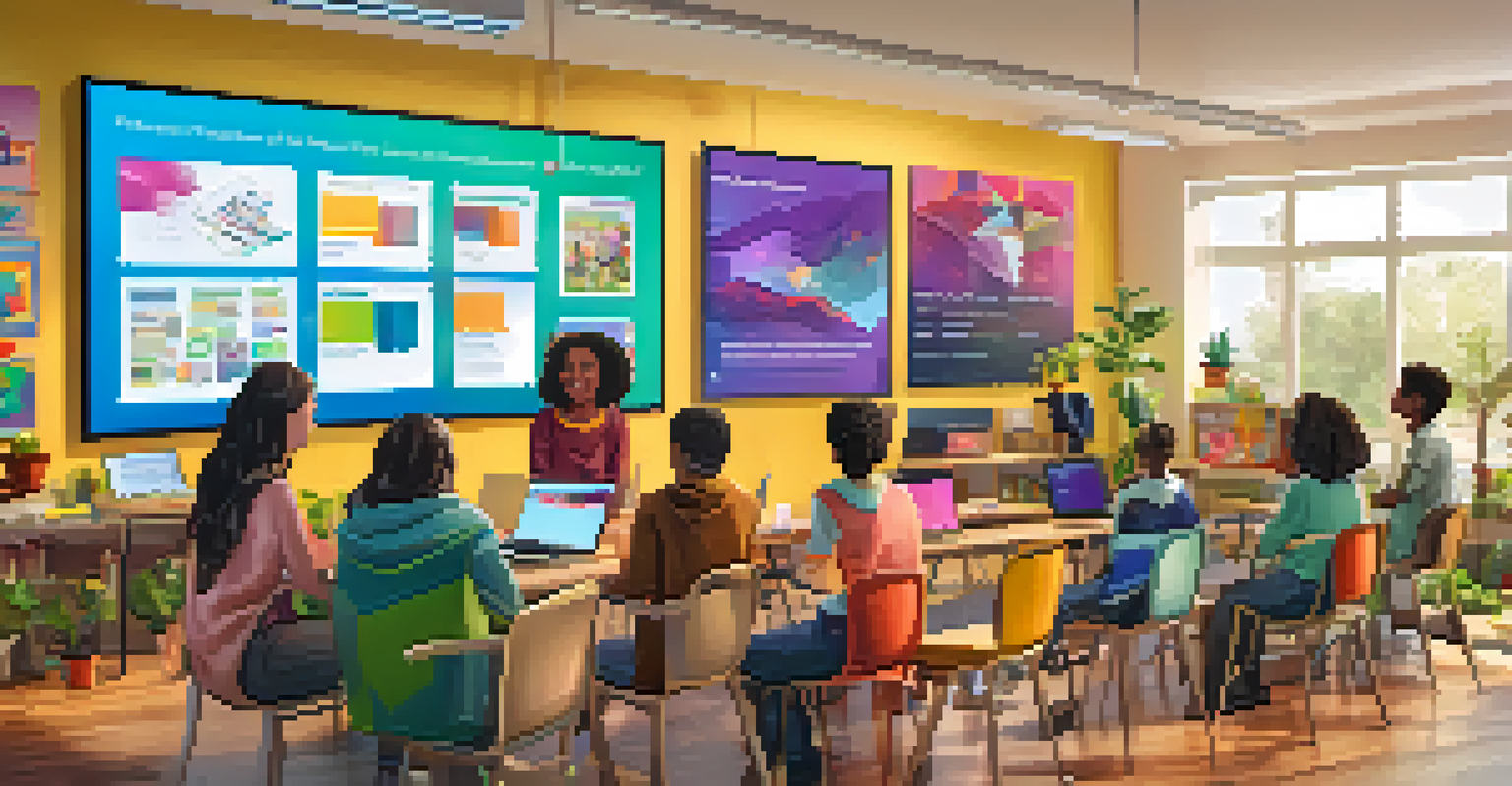Asynchronous Learning: Overcoming Isolation Challenges

Understanding Asynchronous Learning and Its Appeal
Asynchronous learning offers flexibility that many students crave. It allows individuals to engage with course content at their own pace, fitting education into busy schedules. This format also caters to diverse learning styles, making it an attractive option for a wide range of learners.
Education is not the filling of a pail, but the lighting of a fire.
However, while the freedom is appealing, it can lead to feelings of isolation. Students often miss out on the camaraderie that comes from traditional classroom settings, which can hinder motivation and engagement. Recognizing this challenge is the first step in addressing it.
By understanding the dual nature of asynchronous learning, we can proactively implement strategies to foster connection among learners. It's essential to create a balance between independence and community, ensuring that students feel supported and less isolated.
The Role of Technology in Bridging Connections
Technology plays a crucial role in connecting students in asynchronous learning environments. Platforms such as discussion forums, video conferencing, and collaborative tools offer opportunities for interaction that mimic traditional classrooms. These tools can facilitate discussions, group projects, and peer feedback, helping to create a sense of community.

However, simply providing technology isn't enough; it must be used effectively. Instructors can encourage interaction by designing engaging activities that require collaboration and communication. For instance, assigning group projects or discussion prompts can motivate students to reach out to one another.
Flexibility in Learning Styles
Asynchronous learning allows students to engage with course material at their own pace, catering to diverse learning preferences.
Moreover, fostering a sense of belonging through technology can significantly reduce feelings of isolation. When students feel connected to their peers, they are more likely to participate actively and remain motivated throughout their courses.
Creating Engaging Online Communities
Building a vibrant online community is vital for mitigating isolation in asynchronous courses. This can be achieved through dedicated spaces for students to interact, share experiences, and support one another. Online forums or social media groups can serve as platforms for students to connect outside of formal coursework.
Technology is best when it brings people together.
Instructors can also play a pivotal role by actively participating in these communities. By initiating discussions, sharing resources, and encouraging students to engage, educators can help create a welcoming environment. A little encouragement can go a long way in fostering connections among students.
Additionally, incorporating icebreakers or introductory activities at the beginning of a course can help students get to know each other. These simple steps can lay the foundation for meaningful relationships, making the asynchronous experience feel more inclusive.
Utilizing Peer Mentorship for Enhanced Support
Peer mentorship can be an effective strategy to combat isolation in asynchronous learning. Pairing students with mentors who have successfully navigated similar courses can provide valuable guidance and encouragement. This relationship fosters a sense of accountability and belonging.
Mentors can share their experiences, offer study tips, and help mentees feel more connected to the course material and the larger learning community. This peer-to-peer support can alleviate feelings of loneliness and boost confidence.
Building Online Community
Creating vibrant online communities through interaction spaces helps mitigate feelings of isolation among asynchronous learners.
Moreover, establishing a mentorship program encourages collaboration and communication among students. It creates an environment where learners support each other, ultimately enhancing the educational experience for everyone involved.
Encouraging Regular Check-Ins with Instructors
Regular check-ins with instructors can significantly improve the asynchronous learning experience. These interactions can be as simple as scheduled one-on-one meetings or feedback sessions. When students know they have a reliable point of contact, it can help mitigate feelings of isolation.
Instructors can use these check-ins to address students' concerns, provide personalized guidance, and encourage open dialogue. This fosters a supportive atmosphere where learners feel valued and understood. Students are likely to engage more actively when they know their voices matter.
Additionally, these interactions can help instructors identify students who may be struggling with isolation. By being proactive, educators can offer the necessary support to keep students motivated and connected throughout their learning journey.
Incorporating Collaborative Learning Activities
Collaborative learning activities can create a sense of community among asynchronous learners. By designing assignments that require teamwork, students are encouraged to interact and build relationships. These activities can range from group discussions to joint projects, fostering collaboration.
When students work together, they share ideas and perspectives, enriching the learning experience. This collaboration not only helps combat isolation but also enhances critical thinking and problem-solving skills. It's a win-win for both students and educators.
Mentorship Boosts Engagement
Peer mentorship provides valuable support and fosters a sense of belonging, enhancing the overall learning experience.
Furthermore, incorporating technology to facilitate these group activities can enhance engagement. Tools like shared documents or project management software can make collaboration seamless, ensuring that students stay connected while working towards common goals.
Providing Resources for Mental Health and Well-Being
Addressing mental health and well-being is essential in asynchronous learning environments. Institutions should provide resources, such as counseling services or wellness programs, to support students facing isolation. When students have access to mental health resources, they are better equipped to cope with challenges.
Additionally, creating a culture that prioritizes well-being can help reduce stigma around seeking help. Encouraging open conversations about mental health can empower students to reach out when they need support. A healthy mindset is crucial for academic success.

Lastly, incorporating discussions about wellness into the curriculum can remind students of the importance of self-care. By promoting a balanced approach to education, institutions can help students thrive both academically and personally, ultimately reducing feelings of isolation.
Celebrating Achievements to Foster Community Spirit
Celebrating achievements, both big and small, can significantly enhance community spirit in asynchronous learning. Recognizing students' hard work and accomplishments fosters a positive atmosphere that encourages continued engagement. Whether it's through shout-outs in forums or virtual awards, acknowledgment goes a long way.
When students feel appreciated, it boosts their motivation and reinforces their connection to the learning community. Celebrating milestones helps individuals realize they are part of a larger journey, which can alleviate feelings of isolation.
Moreover, sharing success stories can inspire other students and create a culture of support. When learners see their peers thriving, it can spark collaboration and camaraderie, ultimately enriching the entire educational experience.